Share
Photo by Meghan Shupe
These backyard oases in Delaware delight the eye and inspire the soul with a variety of landscapes and layouts.
Consider the glories of the garden, where growth is fueled by sun and rain, and getting your hands dirty is socially acceptable behavior.
The tiny slice of Americana that is Delaware encompasses an astonishing diversity of topography, from the granite-flecked rolling hills and waterfalls of the piedmont in the northern part of the state to the pancake-flat, sandy expanses of coastal plain in the south.
So, too, are the gardeners rooted in the First State, tillers of the soil who embrace, variously, native plants, exotic species, vivid sun-loving flowers, subtly textured shade flora, low-maintenance plots, high-maintenance landscapes, towering trees and ground-hugging mosses.
Here are three inspirational gardens.
Made in the Shade
On a soft spring day, Cynthia de Leon strolls in the dappled shade of ash trees, a canopy for billowing oak-leaf hydrangeas, vibrant bluebells and lush ferns.
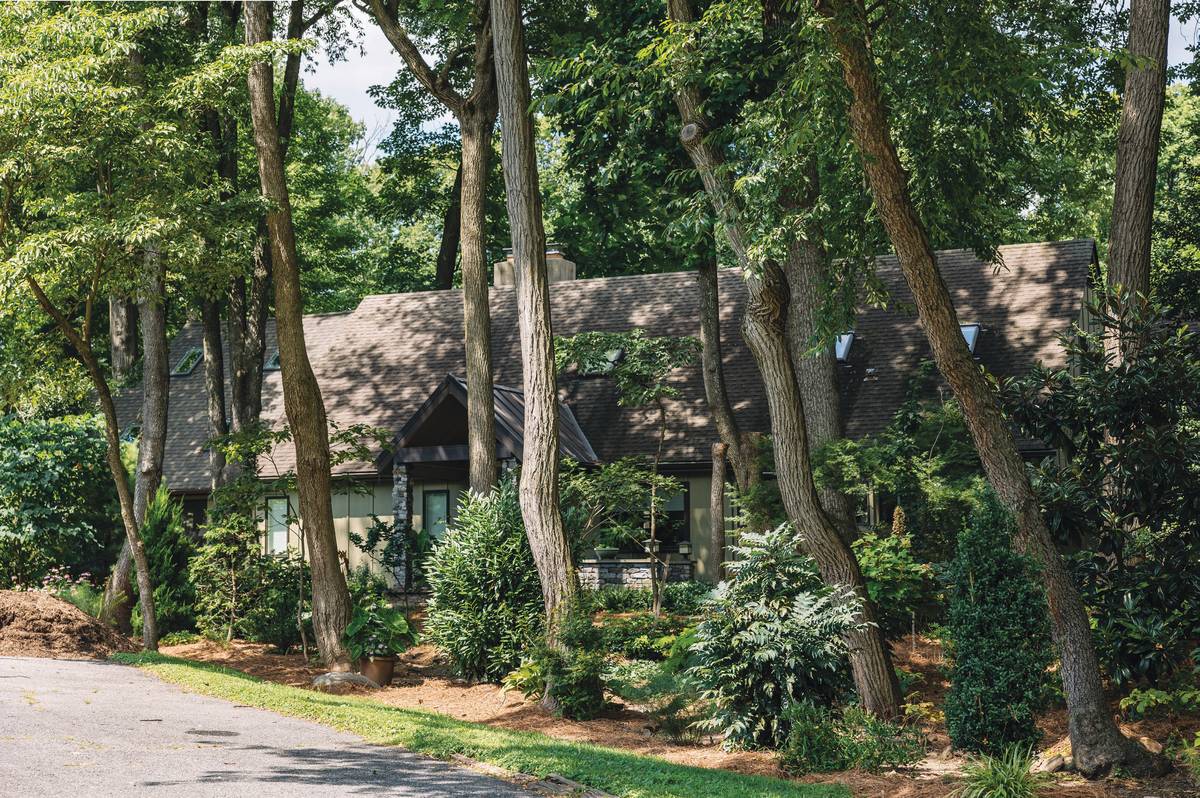
Cynthia de Leon has worked with Kevin Bolen of Imagination Landscaping for years to introduce more native plants to her garden in the Highlands neighborhood, both enhancing the flow and creating a haven for birds and butterflies. By Becca Mathias
“I go out, walk through the garden and lower my blood pressure,” she says.
De Leon lives in a sylvan community tucked behind the Delaware Art Museum. By early May, the camellias already have dropped their creamy petals and she is looking forward to a return appearance by perennial orchids, an exotic visitor. “I didn’t know we could have orchids in Delaware, but we can, and they are lovely,” she says.
When de Leon bought her home in 2007, the lot was overgrown with trees. The first order of business was to take out invasive species that robbed nutrients from more desirable plants. Out went Norway maples and tree of heaven—the primary food source for the spotted lanternfly, a devastating pest that would soon swarm into the area.
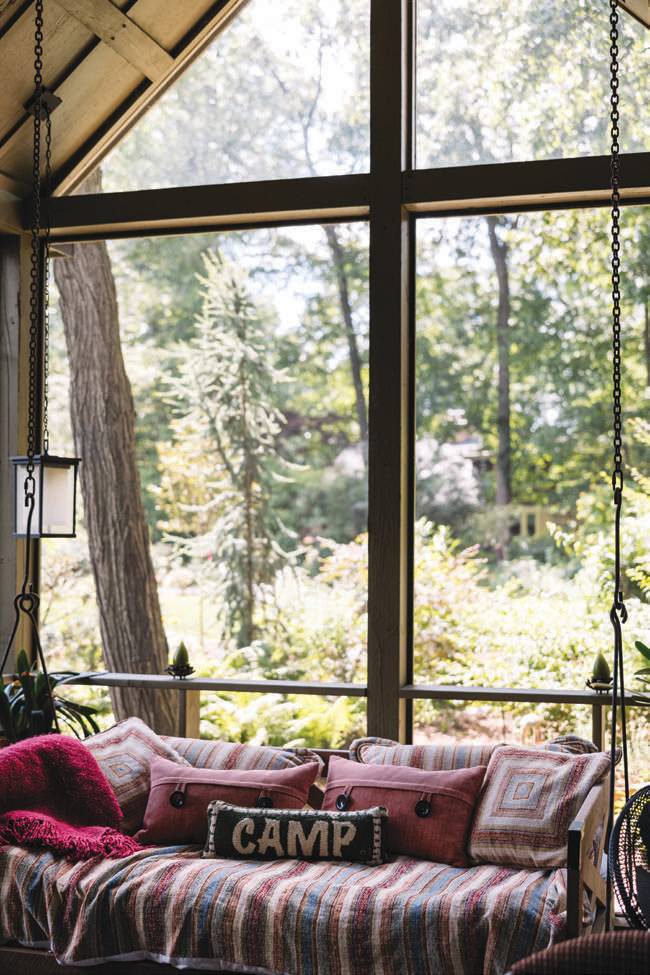
By Becca Mathias
Every day, when she arrived home from work, she pulled out ivy. It was hard, tedious labor, taking three years to root out the last of it. But removing the ivy manually allowed de Leon to avoid using herbicides.
“Nothing is fast in my garden, “she says. “Everything is a process.”
Since 2017, de Leon has worked with Kevin Bolen of Imagination Landscaping, introducing more native plants, creating a haven for birds and enhancing the natural flow of the garden.
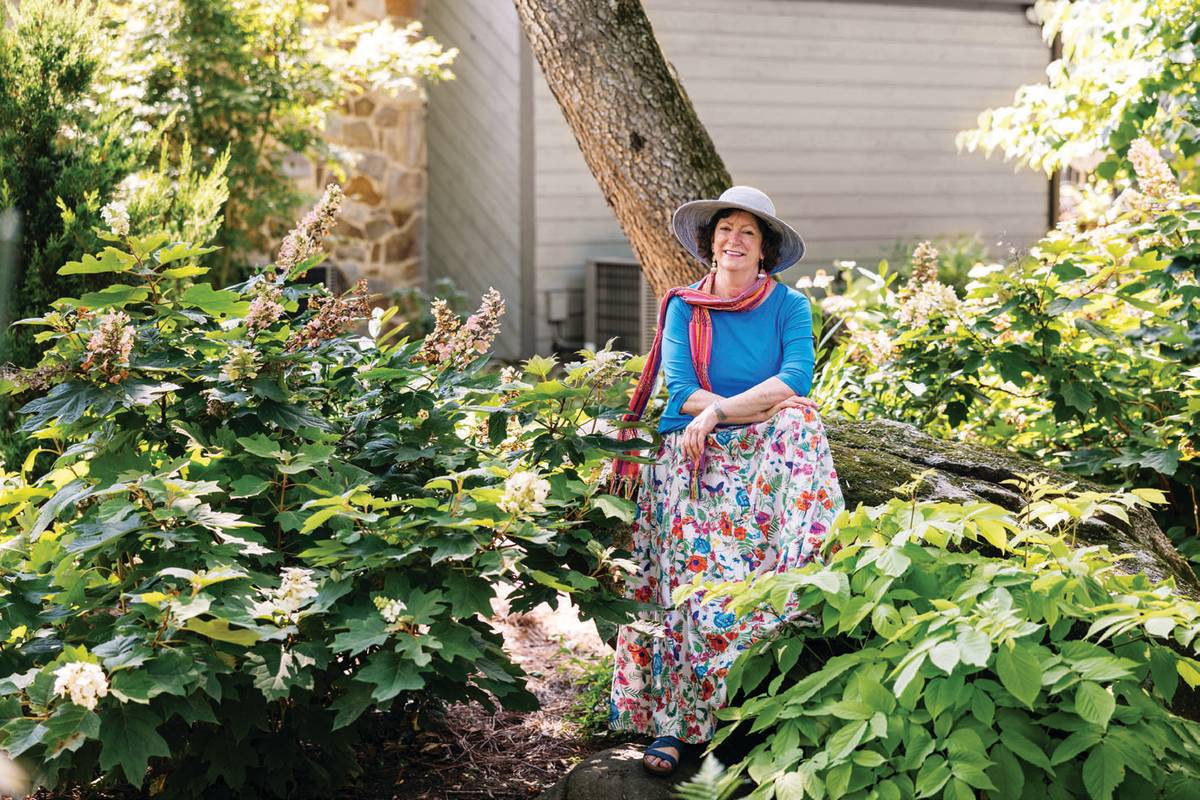
By Becca Mathias
“Kevin designs gardens with a long view,” she says. “You can stand in the garden and see all the way through, all the colors and textures.”
She’s also cultivated the relationship between her contemporary-style home and the landscape, adding a screened-in porch where she can enjoy fresh air without the buzz of mosquitoes, and installing a wall of glass to usher in views of the outdoors. “Pella told me it’s the biggest window they make,” de Leon says.
The garden never sleeps, not even in winter. A hedge of hollies forms a neighbor-friendly natural fence. Magnolia trees in front and back of the house sport big glossy leaves. “They are wonderful to look at and [are] a year-round pleasure,” she says.
From spring through fall, Christmas ferns, sword ferns and Japanese painted ferns offer height, texture and color. In summer, hummingbirds flock to cardinal flowers, 5 feet tall with scarlet spikes.
In nature, plants compete for resources, with trees at the top of the food chain. To give plants and shrubs a boost, de Leon puts down 90 bales of North Carolina long-leaf pine straw.
“It keeps out the weeds but also adds nutrients to the soil as it decomposes,” she says.
“You don’t just go out and buy a garden. You have to be patient and let the plants do what they want to do.”
Planting Poolside
Nicole Bailey Ashton gravitates toward plants that are high impact and low maintenance.
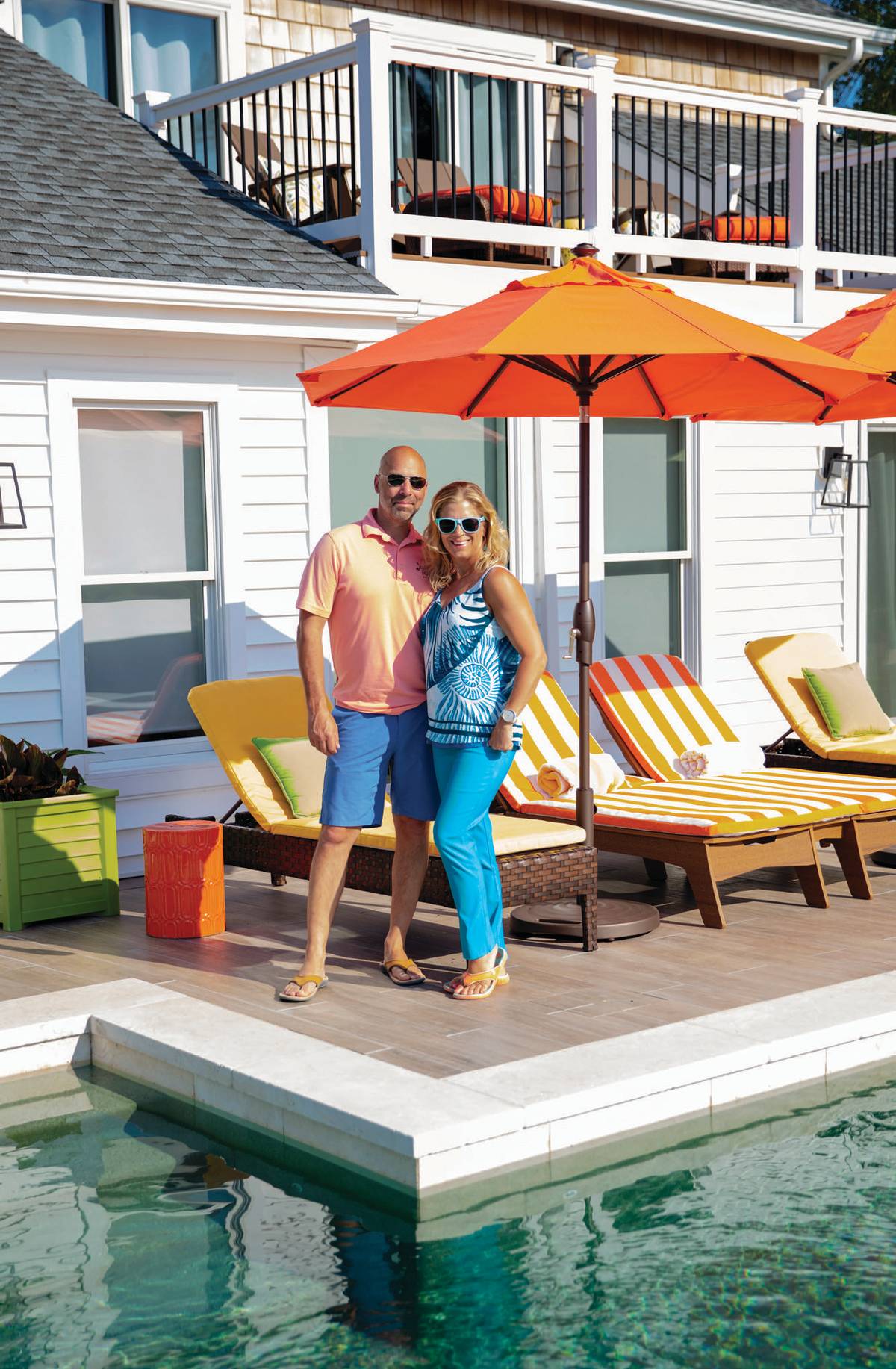
At Nicole Bailey Ashton’s Rehoboth Beach home, her backyard pool is bordered by high-impact, low-maintenance plants that add privacy and a cool retro vibe. By Meghan Shupe.
The pool in her canalside home in Rehoboth Beach is bordered on one side by a rectangular built-in planter filled with variegated yucca.
“It’s a cool throwback to the 1970s and a beautiful way to add privacy to the pool without the severity of a wall,” she says.
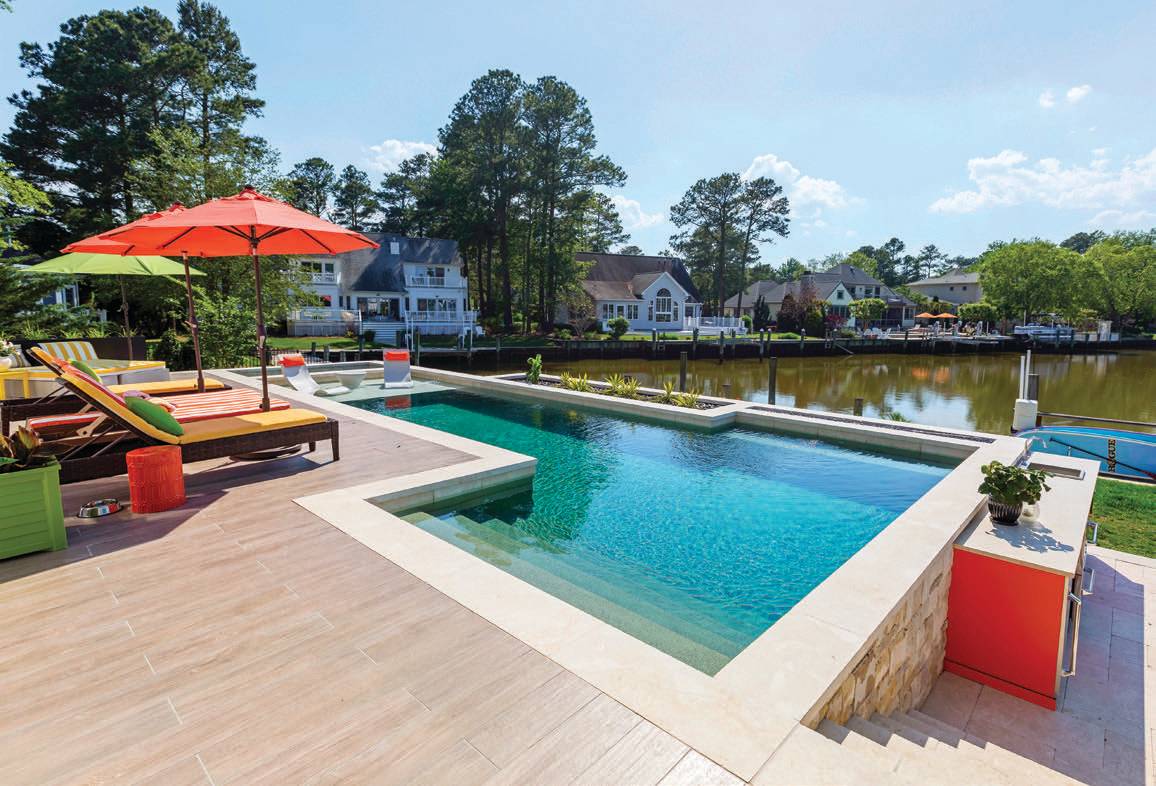
By Meghan Shupe
Ashton and her husband Joe own Ashton Pools by Design in Lewes. At home, their backyard landscape focuses on their pool and entertaining.
Early each morning, when Nicole takes the dogs out, she makes her rounds on the deck, patio and pool surround, giving container plants a drink. For potting soil, she relies on Windsor’s Flowers Plants & Shrubs in Rehoboth. “They make their own soil and I’ve had great luck with it,” she says.
She chooses containers carefully. Pots must be heavy so they don’t blow over in high winds. “And they can’t fade in the sun.”
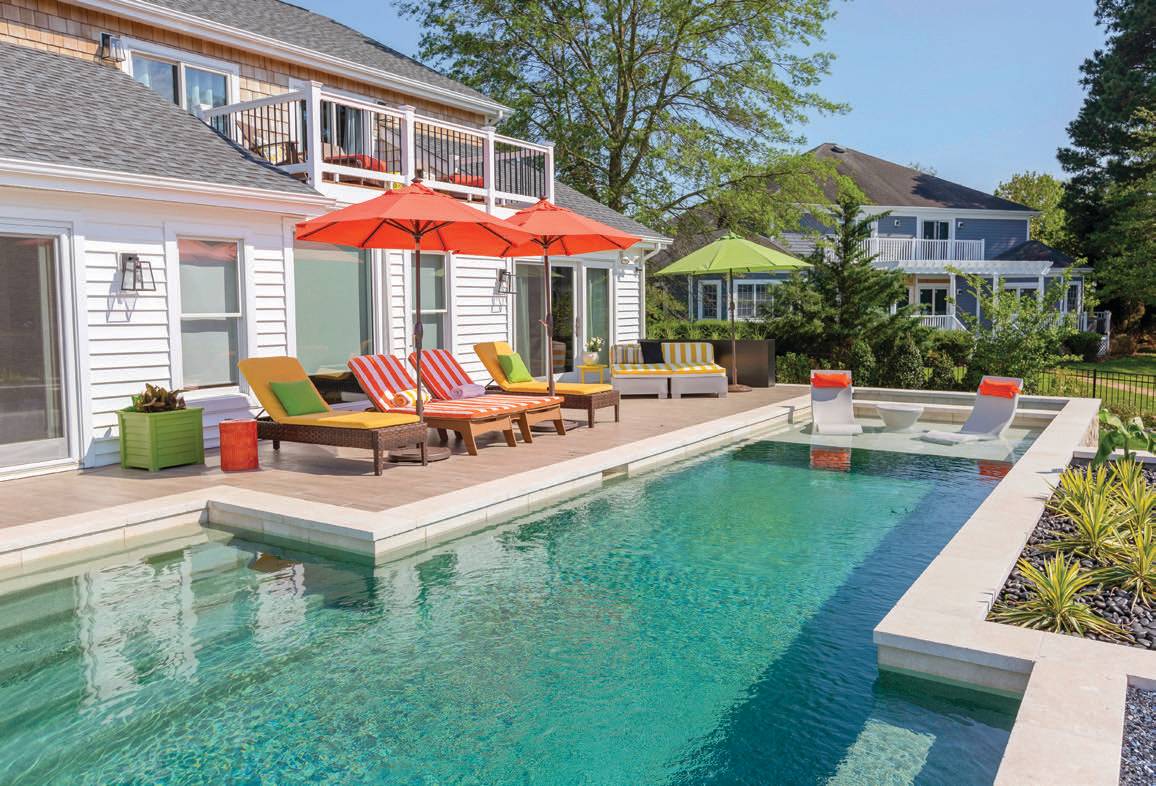
By Meghan Shupe
Ashton enjoys the tropical look of palms, monstera, canna and hibiscus. Groupings of native hollies provide privacy—“and the birds love the berries,” she says. Nicole also has an appreciation for such Sussex County standbys as crepe myrtle, black-eyed Susan and indigenous sea grasses.
“[These] are beautiful and are used to hot weather, so they are drought-tolerant,” she points out. “And the movement of grasses swaying in the wind is magical.”
She is especially partial to yuccas, a spiky perennial shrub native to the American Southwest and Mexico, which offer year-round color and texture. “Yuccas look just as great in February as they do in July,” she says.
The Ashtons enjoy eating outdoors, where herbs are at the ready for salads, grilling and baking pies in the pizza oven. Small containers of herbs become impromptu centerpieces.
“I love to put a pot of basil on the dining table because it smells so good,” she says.
The Urban Garden
Kerry Boan has lived in cities for most of her life. She loved flowers when she was a little girl but didn’t have a place to plant them, so she started raising houseplants.
“One day I counted them, and I had 300 plants,” she recalls.
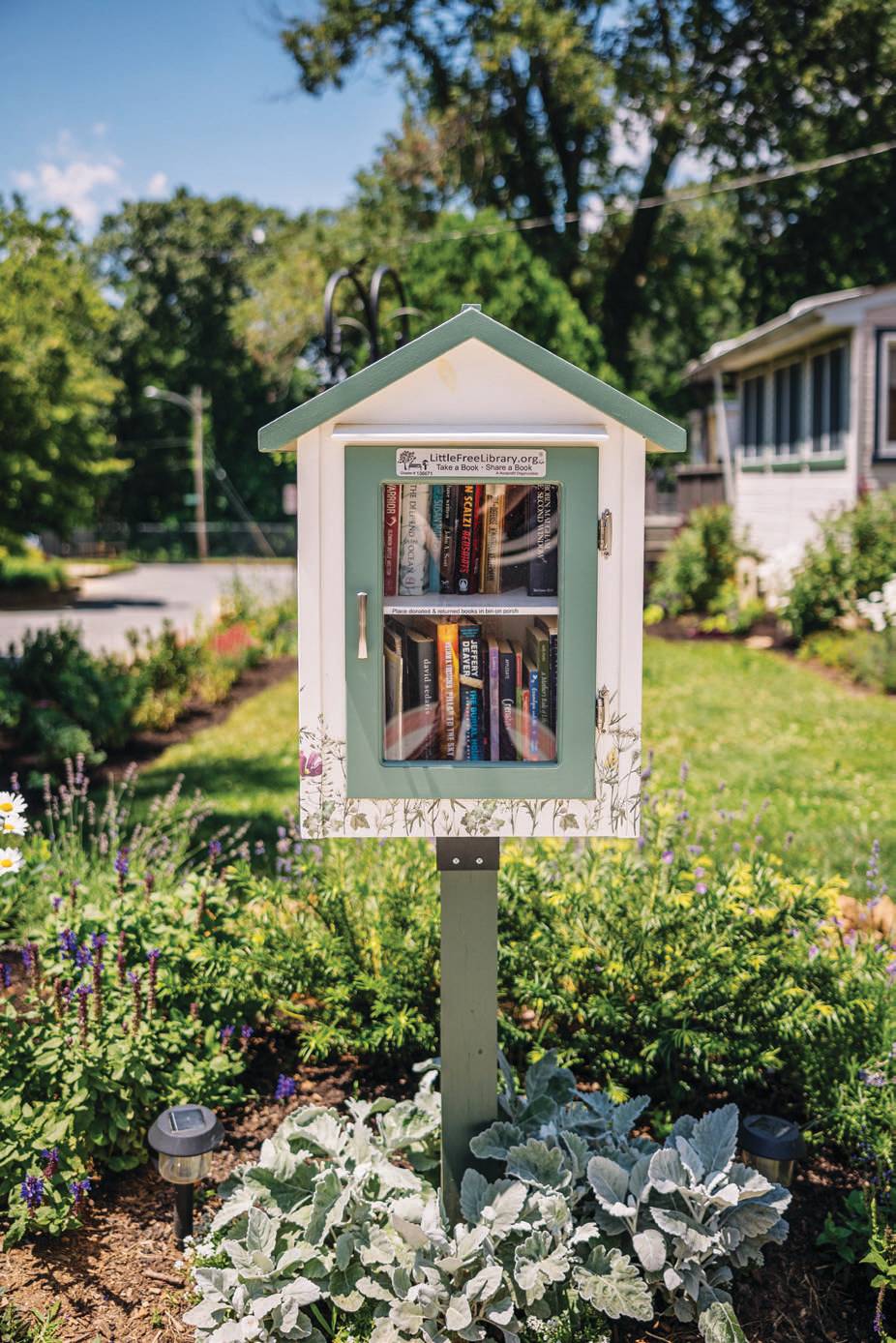
By Becca Mathas
She finally claimed her own piece of land when she and her husband bought a house in Trolley Square in Wilmington with a big side yard fronting a corner. The soil was hard and barren, but Boan was confident she could transform the plot into an urban Eden.
Gardening also meshed perfectly with the next step on her career path as an illustrator and surface designer. “I could grow flowers and be able to illustrate them,” she says.
Boan took classes for beginning gardeners at Mt. Cuba Center, a botanic garden dedicated to native plants and their habitats. She joined a Facebook group, the Delaware Native Plant Identification and Exchange. And she discovered an urban garden provides fertile ground for cultivating friends, getting to know neighbors as they’d walk past. “I’ve met a lot of people because of my garden, which is very nice,” she says.
Now in the process of converting her garden to a native plant environment, Boan is putting in goldenrod, aster, and purple and orange coneflowers. She sows seeds in milk jugs over the winter that mature in time for spring planting.
“A pack of seeds costs $3, and you have the potential for 100 plants—enough to share with friends and neighbors,” she says.
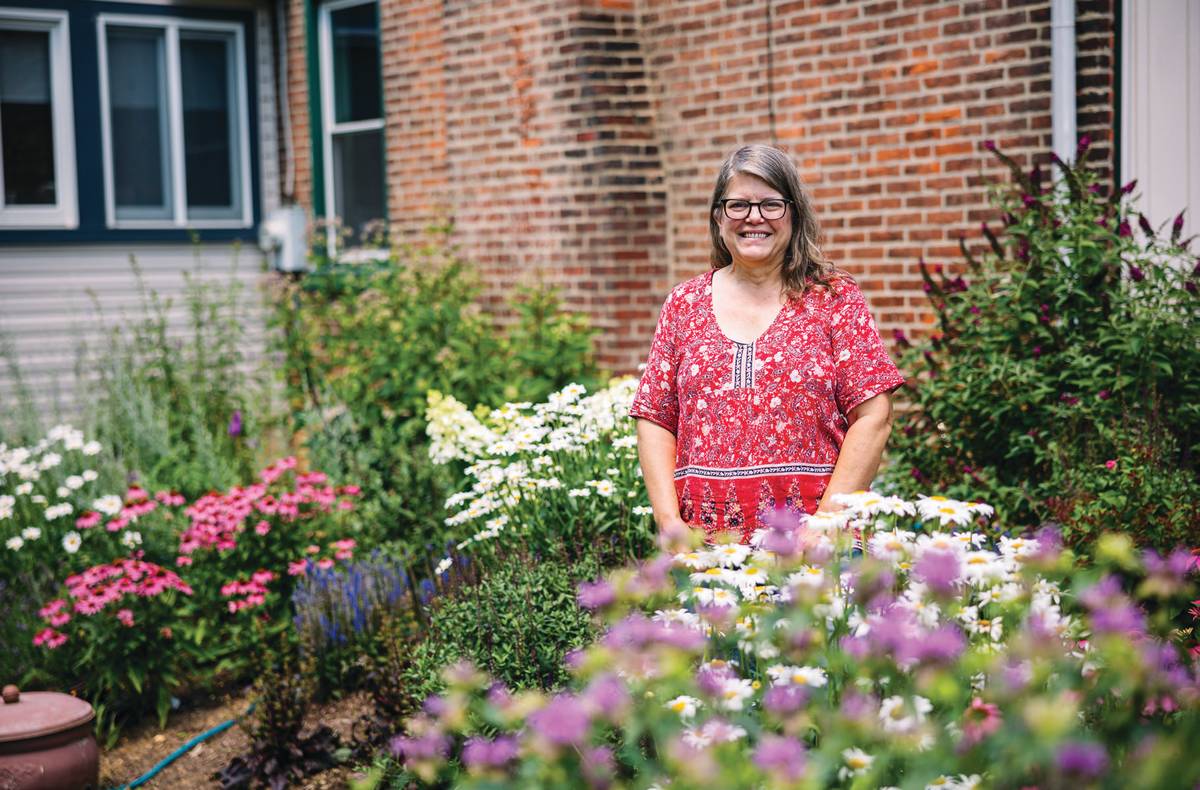
Kerry Boan is converting her garden to a native-plant environment at her Trolley Square home, incorporating aster, coneflowers and goldenrod. By Becca Mathas.
Boan’s garden gets direct sunlight—“like a pizza oven,” she says—so she chooses plants that don’t require shade, mostly flowers like blazing star, a favorite snack for butterflies.
Pollinators are an important element in a healthy garden. She learned to discern long-tongued bees, which suck up nutrients, from short-tongued bees, which dab at nectar, and which plants would attract them. Hummingbirds are drawn to red columbine.
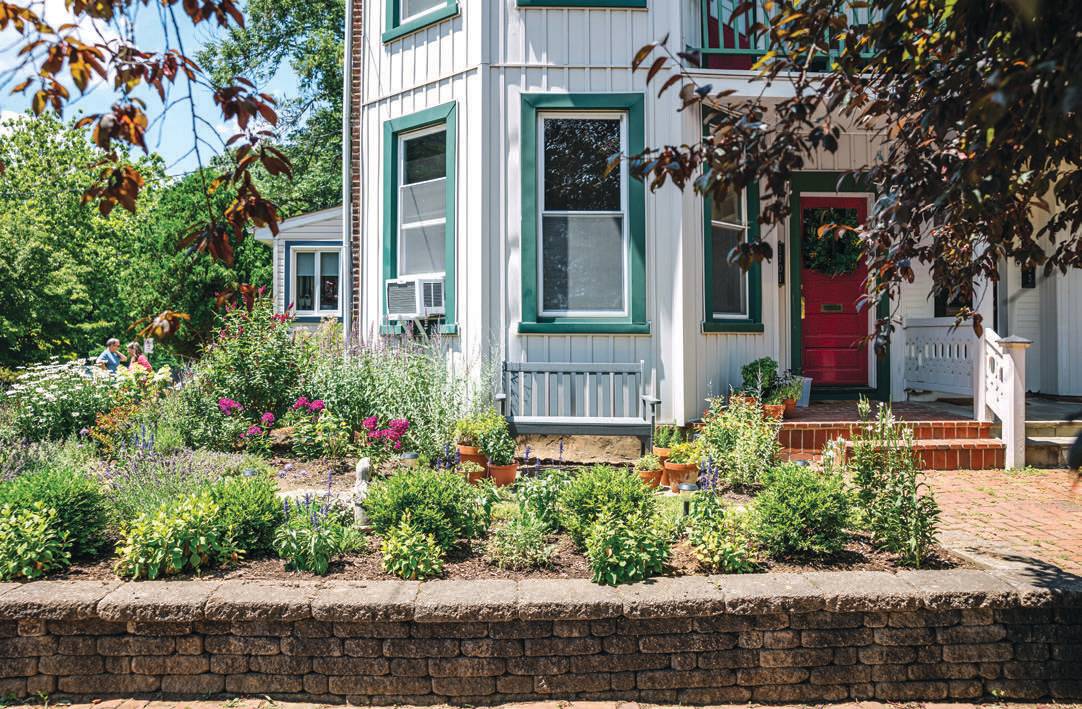
By Becca Mathas
Boan stationed three large containers near the sidewalk so pedestrians can enjoy flowers as they pass, starting with hardy pansies in early spring.
“Growing herbs in pots is a good way for someone who wants to garden to get started,” she says. “Just remember that container plants rely on you to water them and keep them. They can’t fend for themselves like plants in the ground.”
Related: Longwood Gardens Will Preserve This Delaware Estate



